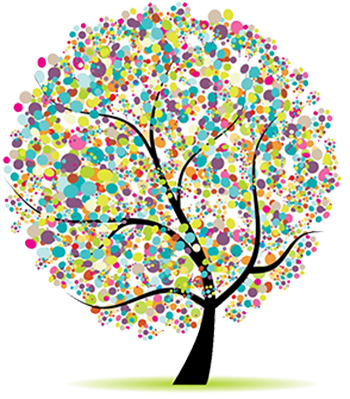Osteopathy is a form of manual therapy, which can be used to diagnose, treat and prevent a wide range musculoskeletal conditions of the spine and extremities it is based on fundamental principles set out by its founder A.T Still.
It is a physical and mental discipline that aims to restore normal structure and function within the body.
Movement is a universal characteristic of life. The osteopathic principles emphasise the importance of restoring lost movement. The Natural Moves Studio in Notting Hill is a centre of excellence for Osteopathy
Osteopathic Treatment at Natural Moves in Notting Hill
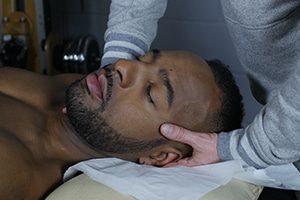
During a consultation in our Notting Hill Studio the osteopath will take a thorough medical history and physically examine the patient (usually in underwear) using a combination of observation, palpation (sense of touch) and manual testing.
The manual testing will usually include motion testing, orthopaedic tests for specific conditions and neurological tests. Using this information the osteopath can establish whether the patient is safe to treat or whether medical referral is required.
If it is safe to treat the patient, the osteopath can use a wide range of techniques to treat musculoskeletal conditions. These include, but are not limited to soft tissue manipulation/massage, mobilization of joints, stretching and high velocity manipulation.
The high velocity manipulation is the clicking that most people identify with osteopathy. It is in fact only one element of osteopathic practice and is not used for all patients. Osteopaths treat a patient within the context of their life situation to achieve the best results. The evaluation and treatment will therefore consider psychological, emotional and social factors.
How effective is osteopathy
The strongest evidence for the effectiveness of osteopathy comes from research into its effect on acute low-back pain. Low-back pain is by far the most common presentation within osteopathic clinics.
This is probably due to patient perception: many people believe that osteopaths only treat spinally. In fact, osteopaths can treat a wide range of joints, muscles and connective tissues.
There is also evidence that osteopathy combined with exercise therapy, like Pilates and AFS can have a statistically significant effect on long-term low-back pain.
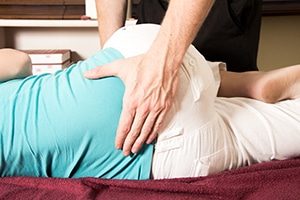
Osteopathy Training
In the UK osteopaths are trained for a minimum of 4 years. Their training includes an extensive medical syllabus, which helps the osteopath to acquire a comprehensive understanding of a patient’s physical health on a cellular level.
There is also a substantial pathology module, to ensure that osteopaths are medically safe and have an in-depth knowledge of serious diseases, which can masquerade as musculoskeletal conditions.
This knowledge is essential when making clinical decisions and when considering which medical specialist to refer to, if the patient’s condition is beyond the scope of practice of the osteopath.
Idris graduated from the London School of Osteopathy in 2007, and worked in a variety of clinical environments before opening Natural Moves the premier Osteopathy and Pilates Studio in Notting Hill
The Origins of Osteopathy
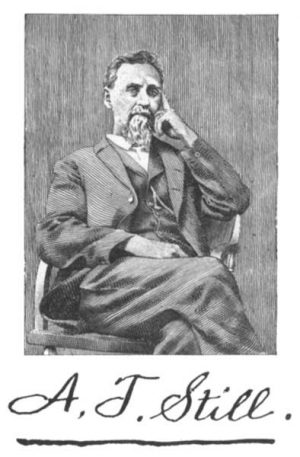
The history of osteopathy dates back to 1874 when A.T. Still coined the term in Kirksville, USA.
He was the father of 12 children, six of whom died. This had a profound effect on his beliefs about health and medicine.
This was an era when conventional medicine was using a concoction of harmful chemicals that often did more harm than good. A. T. Still felt there must be a better alternative and he became interested in other forms of natural healing.
He believed that the body had a natural capacity for healing itself and that illness ensued when this ability was interrupted. He thought that the position and mobility of the joints and organs along with free fluid flow and blood supply were the key to restoring the body’s capacity to heal itself. Still he was the first doctor to really focus on the fundamental concept of “wellness” with which we are extremely familiar today.
Although some classical osteopaths believe they can treat systemic illness with manual therapy, most modern osteopaths confine their scope of practice to musculoskeletal conditions.
Osteopathic thinking sees the body as a perfect machine for health and harmony: a treatment should focus not on the disease but rather on helping the body return to its natural state of health, by removing those mechanical impediments.
The structure of any part of the body will govern its function, and the way it functions will affect its structure – they are inextricably linked. Free flow of blood and nerve impulses are essential for health. The osteopath’s aim is to identify mechanical impediments and barriers to normal function and to restore both structure and function.
Irvin M. Korr developed the neurological model upon which the modern practice of osteopathy is based. It was before its time, as it was from the start very similar to today’s pain models in neurology.
Korr, a professor and biochemist, undertook the task of investigating pain thresholds in the body’s areas of dysfunction. He established that dysfunction in one spinal segment could change the way the neural traffic is processed within the spinal cord.
This can lower a patient’s pain threshold and alter muscle function and tension in the local area. This can also influence spinal segments above and below the affected segment. The focus of osteopathic treatment is to normalise the neurological input to the segment to restore proper function.
What Does Osteopathic Joint Manipulation Involve?
Some people are recommended to undergo osteopathic manipulative treatment by their osteopath, to alleviate the pain of musculoskeletal conditions. A few examples of elements this joint manipulation can include, are:
- Muscle energy technique helps to improve range of motion by identifying a barrier to movement, the patient then pushes against the osteopath’s resistance. There is a neurological effect that helps reset the muscle length, which can improve the range of motion. This process is repeated several times.
- Soft tissue manipulation helps to improve fluid flow and tissue texture within the muscle. This can help reduce symptoms and improve overall flexibility and wellbeing. Soft tissue techniques can also have a beneficial effect on connective tissues.
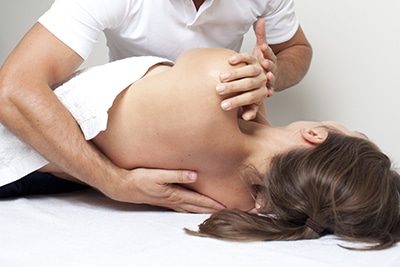
- Cranial osteopathy works on the basis of identifying irregularities in the subtle movement of sacrum and cranium. The osteopath applies soft contact with the patient in these areas and helps to restore balance. This is often done by small movements in the same direction of the irregularities to elicit a release, rather than pulling in the opposite direction.
- Myofascial release: The fascia is the connective tissue surrounding your organs, muscles, and bones. In myofascial release, the osteopath uses manual pressure in a very specific direction and amplitude to alleviate the tension in the fascia.
Osteopathy and Stress
Each of us has his or her own unique personality and constellation of sociological realities. Osteopaths recognise that this is not only significant to our lives as a whole but also our experience of pain and pain management. As a result, they understand that the stressors in their patients’ lives should be acknowledged and taken into account when carrying out treatment.
Osteopathy’s understanding of the importance of the individual and his or her experiences and personality bares similarities to the biopsychosocial model in medical science. The biopsychosocial model holds that illness can be caused or worsened by psychological and social factors as well as physiological ones. Osteopaths are skilled in building a relationship with their patients, and getting to know them as people. They take a holistic approach, paying attention to the unity of being (body, mind, and spirit).
Osteopathic treatment can help you more effectively deal with stressors in your life, and alleviate their effect on your overall health. Stress have a negative impact not only on the immune system and blood pressure but also on the musculoskeletal system (your joints and muscles).

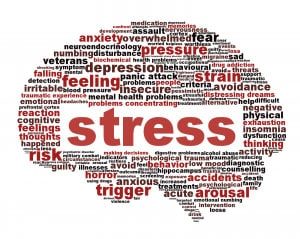
Stress impacts the musculoskeletal system because it tends to create constant muscular effort throughout the day and this can quickly lead to aching and fatigue. The muscles involved in digestion and breathing can be directly affected by stress.
When the gut’s sphincter muscles tighten up, problems with gas, build-up of matter, bloating, and heartburn can occur. When you’re stressed, one will tend to breathe from high upper chest rather than using your diaphragm. This called apical breathing and can lead to other problems e.g. neck tension.
Osteopathy believes the body has a capacity for healing and self-regulation. When this capacity is disturbed, osteopathy uses external techniques of manipulation to restore balance in the body.
More Details on Specific Osteopathic Treatments
There are many more specialised techniques used by osteopaths, effective for addressing particular disorders and illnesses. Below are some examples:
Functional Technique: the term “functional technique” applies to osteopathic techniques that place the patient in a physical position of ease (i.e. away from the pain or restriction) that facilitates pain relief and deep relaxation.
Strain and counter-strain techniques: this technique has similarities to functional techniques in that they utilise a physical position that promotes the relief of pain. The main difference is that pressure is applied directly to the painful point, which can release when held for 90 seconds in a position of ease.
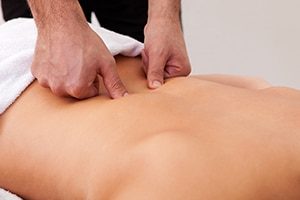
Musculoskeletal Conditions that Osteopathy Can Address
Some of the conditions most commonly treated by osteopaths include:
- Musculoskeletal conditions of the legs, pelvis, and hip
- Sports injuries
- Shoulder pain
- Lower back pain
- Arthritis
Osteopathy is capable of offering many general benefits, including:
- The promotion of healing
- The alleviation of muscle stiffness and tension
- The optimisation of fluid flow to the body’s tissues
- The alleviation of restricted joint mobility; for example, after a long period of bed rest (which can have a profoundly negative effect on the joints)
Osteopathy for Relaxation and General Well-Being
Some people see general osteopathic treatment as an effective method of relaxation in and of itself. Another lesser known benefit of osteopathy is its positive effects on posture. This can be helpful if bad posture is causing pain.
Osteopathy also encourages a focus on holistic health and wellness that encourages patients to be more conscientious about their diet and lifestyle. Osteopathy is also valued for its ability to restore depleted energy levels and promote relaxation people experiencing stress. These effects are due to osteopathy’s ability to promote better balance within the nervous system, musculoskeletal system, and fluid flow.
These characteristics have been instrumental in osteopathy becoming a popular form of complementary therapy for a host of medical conditions.
